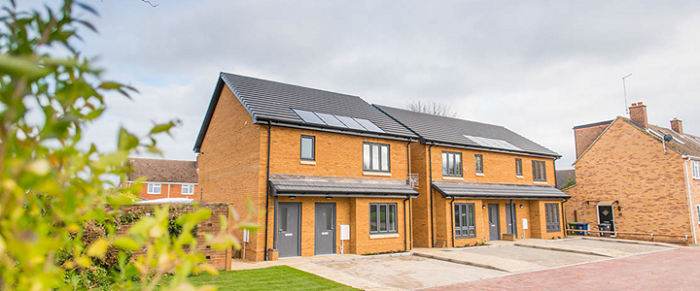These affect:
the setting of Affordable Rents by Registered Housing Providers, for homes let to people on the councils’ housing registers;
the location and mix of Affordable Homes in new developments;
and the councils’ expectations of new homes that are built specifically to be rented out (Build to Rent).
Both councils are committed to building homes that are affordable to live in, and ensuring that new Affordable Homes will be well-designed and located within new developments in such a way as to promote mixed, balanced and inclusive communities.
The two councils consulted jointly on these policies because they will add detail to the Greater Cambridge Housing Strategy 2019-2023, and are aimed at new housing developments across both Cambridge and South Cambridgeshire. They will also help to inform the proposed joint Local Plan.
Affordable Rents policy
Affordable Rent properties are targeted at people on lower incomes who have more limited housing options available to them.
Through the new Affordable Rents policy the councils are asking for Affordable Rents for new homes let by Registered Housing Providers in Cambridge City to be set at 60% (or lower) of the average rent for the same size property in the City or the City fringe; and in South Cambridgeshire, 70% (or lower) of the average rent for the same size property in the district. The national policy for affordable rents sets a maximum limit of up to 80% of a market rent.
For a 1-bedroom property in Cambridge, this would see Affordable Rent of £131/week, compared to the average rent of £219/week for a privately rented property; for a 4-bedroom property in South Cambridgeshire, this would see Affordable Rent of £238/week, compared to the average rent of £340/week in the private sector.
Clustering and distribution of Affordable Housing policy
The Clustering and Distribution of Affordable Housing policy sets out expectations on how Social Rent, Affordable Rent and Shared Ownership homes should be set out in new developments. A cluster should usually include a mix of different sized properties (such as 1, 2, 3, and 4-bedroom homes). Wherever possible, Affordable Homes should also be spread out across new developments, so that positive mixed communities are created.
For example, the policy states that on small developments of up to 30 units, a cluster should include a maximum of six to eight Affordable Homes; on a medium development (30 to 200 units), a cluster should include a maximum of 15 homes. Other considerations include clusters not abutting each other on a development (or on adjacent developments); blocks of flats being expected to have a maximum of 12 flats sharing a lift or stairwell; and ground floor flats expected to have their own entrances. The policy does allow for some exceptions, for example where the development is made up of all Affordable Housing or where building will be at high density.
The policy should be used to help guide applicants to submit successful planning applications and will be a material consideration in making decisions on applications.
Build to Rent
Build to Rent homes are usually built commercially, and are solely intended as rental properties. The Build to Rent policy will be a material consideration in planning decisions.
In a similar way to the considerations around clustering set out in the above policy, the Build to Rent policy makes clear an expectation for Build to Rent projects to include a mix of property sizes and, on larger developments, to be spread out across the development in small groups. In Build to Rent developments of 10 or more homes, a minimum of 20% will need to be available at Affordable Private Rent levels (which should be set with regard to the Affordable Rents policy), and preferably lower. The criteria for these homes will need to be agreed with the council, and tenancies of three-plus years offered. Communal space and amenities are also expected, including provision of work spaces.
Cllr Mike Todd-Jones, Cambridge City Council’s Executive Councillor for Housing, said: “I am very pleased to announce that these three major housing policies are now in place. We all know that so many people find it difficult to find good quality homes in the Cambridge area that they can afford to live in. These policies will help those who want to live in the private rented sector as well as those on the Council’s housing register.
“As a Council we are determined, where we can, to ensure that any new housing scheme provides as much affordable housing as possible and that the rents for those homes are truly affordable. It is also really important that those needing affordable housing are not discriminated against when it comes to designing new communities.”
Cllr John Batchelor, Lead Cabinet Member for Housing at South Cambridgeshire District Council, said: “We are committed to building vibrant, inclusive communities, and these policies set out how we expect to achieve this, ensuring different households are able to live alongside each other and create new communities together.
“The policies also set out our expectations on Affordable Rents, to support our Business Plan priority of ensuring we are able to offer homes that people can genuinely afford to live in. Finally, with Build to Rent schemes on the horizon, it’s essential that we have clear policy expectations to ensure schemes are of good quality, affordable and well managed for our residents.”
The policies are available on the councils’ websites at:
South Cambridgeshire District Council
